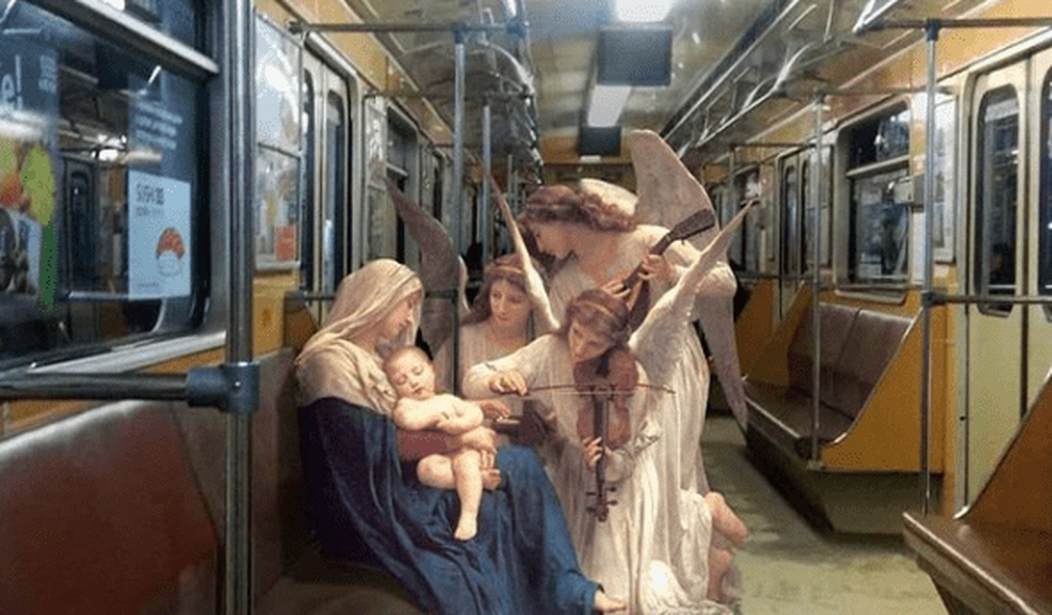I hate modern art. If it isn’t a picture of something, or it doesn’t look like what it’s supposed to be, I have no patience for it. When dragged to modern art museums, as I sometimes am, I spend my time muttering darkly about how much money I could make passing off my three-year-old’s scribbles as art. “Look!” I’ll hiss at my husband, gesturing angrily, “That’s just a piece of white paper! White paper! I could buy that at Staples for, like, half a cent!” My husband won’t answer. He’ll be reading the placard about the artist’s “process” and pretending he doesn’t know me.
The truth is, in addition to the fact that looking at paint splatters holds zero interest for me unless I’m saying “That’s beautiful, dear” and hanging them on my refrigerator, modern art makes me mad. I hate that I live in a cultural moment in which the beauty and craftsmanship of, say, the Renaissance, has been replaced by the asinine idea that all that must be “deconstructed.” Art should describe the human experience and “random lines on page number 543” just doesn’t cut it. Which is why I’m so fascinated by the work of Alexey Kondakov.
“Alexey who?” you say. Allow me to enlighten you. Alexey Kondakov is a Ukrainian artist who seamlessly inserts classical artwork into modern-day landscapes using photoshop. His work is striking, not just for the clever visuals — which are expertly executed — but for what it represents.
See, of course times have changed since the Renaissance, or Victorian England, or whenever. And art should change too. But here’s a perfect example of an artist using modern techniques to make a statement about the universality of art, its relevance in our time, and the poignancy of the past.
Take this Madonna and child, for example.
It’s beautiful, and beautifully striking. By placing this classical representation of Mary and Jesus on a modern-day subway train, Kondakov brilliantly depicts the humble beginnings of the Word made flesh. It’s such an opulently beautiful painting, in such a mundane setting — a place that any of us might go on any given day without even thinking about it. Isn’t that the point?
Or how about these little cherubs descending into a garbage-strewn pit?
Kondakov calls this one “While you were sleeping.” It gives the viewer the idea that, even in the dirtiest and darkest of places, there might be something beautiful — something heavenly — going on. To me, the juxtaposition of the modern-day scene with the classical cherubs says so much more about past and future and the way they’re connected than, say, a cubist portrait (sorry Picasso) ever could.
Check out this out-of-place dude:
I really identify with this guy! Look at him sitting there at the cheap gingham tablecloth, surrounded by grit and graffiti in all his old-fashioned finery. For all of us who worry that our culture has taken a definitive turn for the worse, this guy could be our poster boy! It says something, and it’s beautiful. It’s art!
Kondakov’s work also connects past and present by showing the ways in which we’re still grappling with the same issues and doing the same things as people from the past. For example, here’s a girl surrounded by clothing who can’t find anything to wear. All the material things in the world won’t ease her loneliness.
Here’s a bunch of guys at a party.
Here’s a couple hanging out.
You get the idea. Artists like Kondakov give me hope for the future of art in a way that going to MoMA never does. I hope there are more artists out there like him, and that their work gets the recognition it deserves. In the meantime, I’m off to try to sell the tablecloth my son accidentally spilled ketchup on the other day. Judging by the stuff they’ve got at MoMA, I’m gonna be a millionaire!









Join the conversation as a VIP Member